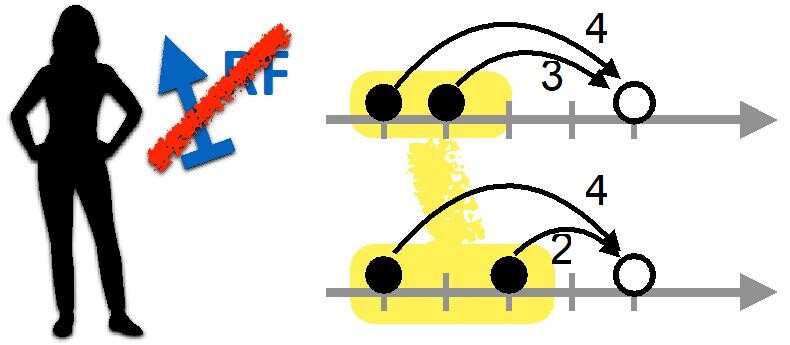All physical systems are described relative to some frame of reference: for experiments with several quantum particles, the positions and timing of the particles are always described relative to a clock or rod in the laboratory. But what if we do not have such clocks or rods available – or if we take the insight seriously that these rods and clocks are ultimately quantum systems, too? Then we have “quantum frames of reference”, and their behavior can lead to very counterintuitive phenomena.
A particularly enigmatic phenomenon of this kind has been described by researchers from Curitiba (Brazil) and Bristol (UK) in 2011. Suppose we have three particles in a coherent quantum superposition state. What if the third particle is ignored or becomes unavailable, will the remaining two particles still be coherent? The answer must be “no” if the third particle carries information about its relation to the other two, since this information decoheres the system. But this “relation” depends on the quantum frame of reference – whereas the presence of coherence can be determined absolutely and objectively. How can this apparent paradox be resolved?
In their recent paper in the journal Quantum, a team led by Markus Müller from IQOQI Vienna has used the paradox as a motivation to rebuild the theory of quantum reference frames from scratch. Building on a small set of simple principles, Krumm, Höhn and Müller have shown that transformations between quantum reference frames can be understood as symmetries of a certain kind, leading to a complete description of what can be measured by agents constrained by such quantum symmetries. This turns out to resolve the paradox of the third particle via the mathematics of group theory: coherence is indeed preserved, no matter how we describe the system.
This result may pave the way to a consistent description of composition in the presence of quantum symmetries, which is key to many applications in quantum information theory.
Publication: Marius Krumm, Philipp A. Höhn, & Markus P. Müller: Quantum reference frame transformations as symmetries and the paradox of the third particle, Quantum 5, 530 (2021). DOI: 10.22331/q-2021-08-27-530

